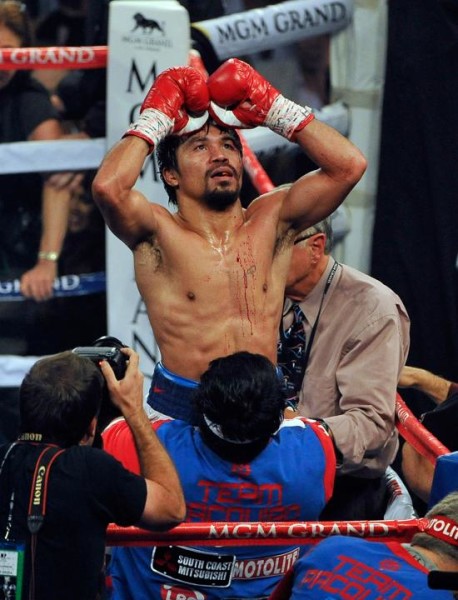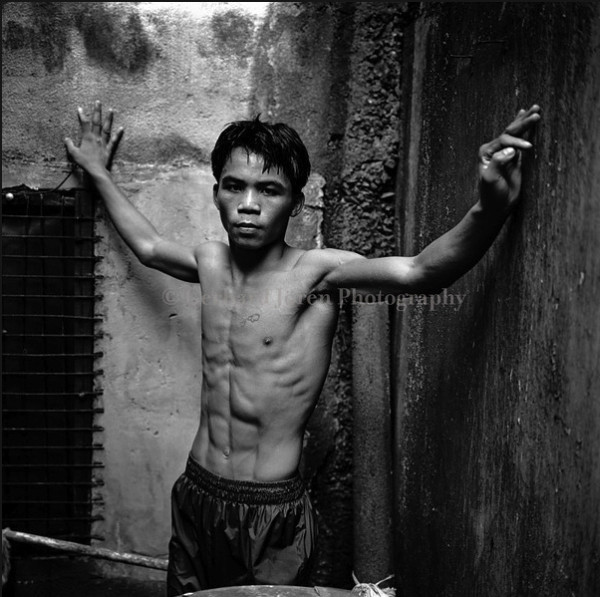
Photo by Gerhard Joren
As Manny Pacquaio closes out his illustrious career, few will argue his place among the all-time greats is secured. Moreover, all bets are off that Pacquiao has cemented his spot as the greatest boxer to ever come from the continent of Asia.
There may be more arguments, however, if boxing writers and fans alike paid some attention to the astonishing achievements of the Asian greats that may have paved the way for the success Pacquiao and some of his contemporaries are enjoying today.
In 2002, Ring Magazine included Fighting Harada from Japan, Khaosai Galaxy from Thailand, Pancho Villa and Flash Elorde from the Phillipines in their list of the 80 Greatest Fighters of the Last 80 Years.
There is no doubt since that list came out in 2002, other Asian greats including Manny Pacquaio must be added to the list.
While there have been some exceptionally talented championship-level boxers from Asia, few boxing fans in Europe and the Western Hemisphere know much about these Asian icons because many of them did fight outside their respective homelands and none of them enjoyed the international fame and status that Pacquaio has for the past decade.
In honor of perhaps the best Asian boxer ever, Manny Pacquaio, who will reportedly retire from the sport after the Timothy Bradley this Saturday, April 9, 2016, here is an earnest attempt to compare achievements and rank the top 10 Asian fighters of all time.
Honrable Mentions
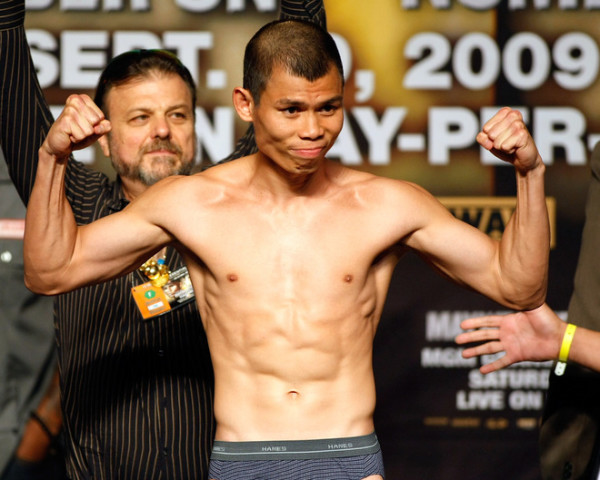
Suk Kil Moon
From South Korea, former WBA bantamweight and WBC superflyweight champion.
Defeated Khaokor Galaxy (the twin brother of boxing legend Khaosai Galaxy and two-time WBA bantamweight champion) to win the bantamweight title.
Also holds wins over boxing greats Gilberto Roman, Hilario Zapata and Nana Yaw Konadu.
Chris John
From Indonesia, former WBA featherweight and WBA super featherweight champion. Suffered only one loss in his stellar career, winning 48 times. Signature win was a disputed one over all-time great Juan Manuel Marquez.
Made 18 successful title defenses of the featherweight title, second-most in the division’s history (after Eusebio Pedroza).
Many detractors, however, point out that he passed on opportunities to fight other top-ranked fighters and champions in the featherweight division because he did not want to fight outside of Indonesia, despite the fact that he fought in one of the marquee lighter-weight divisions.
Nonito Gonzalez Donaire Jr.
Nonito Donaire is from the Phillipines and is known as “The Filipino Flash” for his quick hand speed and punching power. Donaire is the current WBO super bantamweight champion and a former four-weight world champion.
He has won multiple titles in the flyweight, bantamweight, super bantamweight and featherweight divisions, in addition to an interim title at super flyweight.
Donaire returned to the junior featherweight division after losing his featherweight belt in devastating fashion–a sixth-round knockout at the hands of Nicholas Walters in October 2014.
He has since won three bouts in a row and still looking to regain his status as one of the best pound-for-pound fighters in the world. At the age of 33, however, his best days may be behind him.
Photo by AFP
10. Flash Elorde
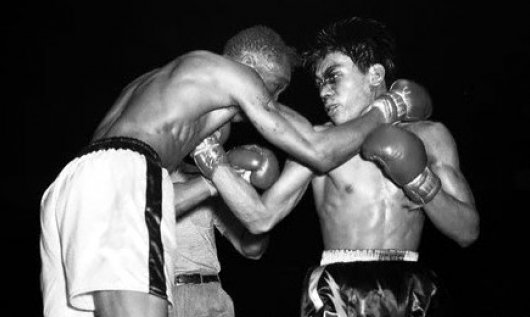
Years Active: 1951-1971
Professional Record: 89-27-2, 33 KOs.
Titles: World Junior Lightweight Champion 1960-1967
A talented and highly-skilled southpaw who had fast hands and good footwork, Gabriel “Flash” Elorde dominated the junior lightweight division for seven years and still holds the record for the longest reign in the division’s history.
Elorde was quickly thrusted into the ring and turned professional at the age of sixteen. He lost eight of his first 18 fights before finally coming into his own. He was able to win the national bantamweight title within his first year of fighting. His southpaw stance, quick hands and relentless body attack proved too much for most of his opponents.
In perhaps his most signature win, Elorde outpointed all-time great featherweight champion Sandy Saddler in 1955 in a non-title bout.
In 1956, the rematch was fought with Saddler’s featherweight title on the line. Elorde was winning this fight as well. In the 13th round, however, Elorde suffered a cut on his eye and lost the fight by TKO.
Many observers criticized Saddler, who was notoriously known as a rough and dirty fighter, for using dirty tactics to induce the cut on Elorde because he was losing on points.
It took another four years before Flash received another shot at a world title. He moved up in weight and annexed the world super featherweight title on March 16, 1960 by knocking out Harold Gomes in seven rounds.
He defended the crown 10 times until June 15, 1967 when Japanese challenger Yoshiaki Numata beat him by majority decision. His title reign as world junior lightweight champion was the longest ever (seven years and three months).
Elorde also challenged hall-of-famer, Carlos Ortiz for his world lightweight title on two occasions. They were gallant, but losing efforts as Ortiz stopped Elorde both times in the 14th round.
The World Boxing Council (WBC) named Elorde the greatest super featherweight champion of all time. He became the first Asian inducted into the New York-based International Boxing Hall of Fame in 1993. He was also enshrined into the World Boxing Hall of Fame.
The Ring Magazine’s writers voted Elorde the 78th best fighter of all time in 2002 when they listed the 80 greatest fighters of the last 80 years.
Photo by Getty Images
9. Pongsaklek Wonjongkam
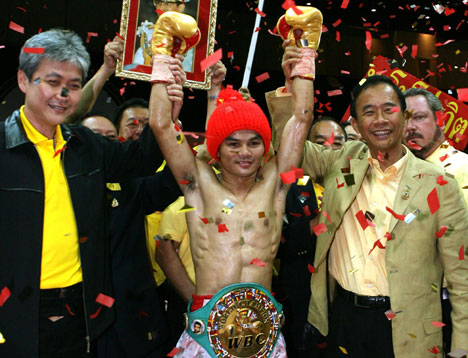
Years Active: 1994-2013
Professional record: 90-5-2, 47 KOs
Titles: Two Time Ring Magazine and WBC Flyweight champion 2001-2007; 2009-2012
Pongsaklek Wonjongkam began his professional career with a 9-2 record. Both losses were to Filipino journeyman Jerry Pahayahay, whom Wonjongkam would later defeat by 10-round decision. After his second loss to Pahayahay, Wonjongkam won 55 consecutive bouts–the longest continuous win streak in boxing during that time.
On March 2, 2001, Wonjongkam stopped Malcolm Tuñacao by first round TKO to win the lineal and WBC Flyweight championships. In his fourth defense of the lineal and WBC Flyweight titles, on April 19, 2002, Wonjongkam knocked out Japanese flyweight titleholder Daisuke Naito in 34 seconds, setting a record for the fastest knockout in flyweight division history.
Wonjongkam would set the flyweight division record with 16 consecutive title defenses.
Wonjongkam suffered a shocking upset decision loss to Daisuke Naito–an opponent he had defeated in two previous challenges for his title–in July, 2007, ending his long run as champion. On March 8, 2008, Wonjongkam faced Naito once again, but the fight ended in a draw.
Wonjongkam won the vacant interim WBC Flyweight championship in a bout against Mexican, Julio César Miranda by a unanimous decision on April 24, 2009.
On March 27, 2010, Wonjongkam defeated lineal champion, Koki Kameda–who had recently defeated Naito to win the title–by majority decision to unify the WBC Flyweight championship and interim WBC Flyweight championship. Wonjongkam would also claim the vacant Ring Flyweight championship.
On March 2, 2012, Wonjongkam lost his titles by a shocking TKO stoppage to Sonny Boy Jaro of the Philippines. He would fight until the end of 2012 before retiring from the ring.
Photo via Thai Fight News
8. Yoko Gushiken
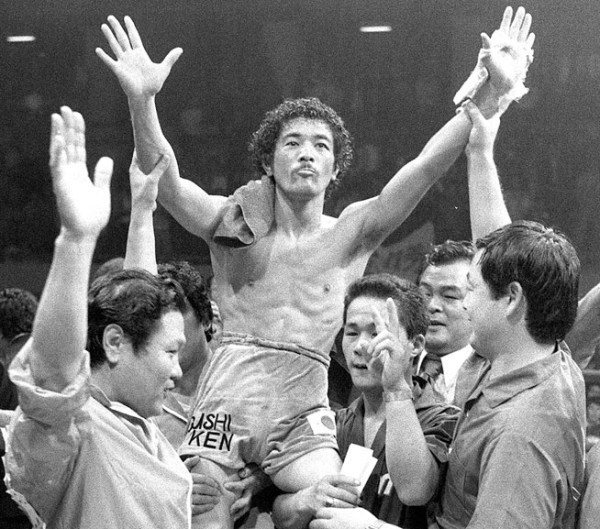
Years Active: 1974-1981
Professional Record: 23-1, 15 KOs
Titles: WBA Light Flyweight champion 1976-1981
Yoko Gushiken was nicknamed the “Fierce Eagle” because of his aggressive style and for having strong stamina.
He utilized his southpaw stance, aggression and non-stop combination punching to simply overwhelm his opponents, who eventually wilted under the pressure he applied.
Gushiken fought for the WBA Light Flyweight crown after just nine professional fights. He defeated Juan Antonio Guzmán, a well-seasoned pro, by knockout in the seventh round. He held the championship for over four years. He made a then division record 13 title defenses, including eight by knockout.
Among his victorious title defenses, Gushiken defeated future champions Alfonso Lopez, Rafael Pedroza and Pedro Flores. In his 14th title defense, he fought Mexican Pedro Flores in a rematch, who had previously lost a close decision to him. In the rematch, Flores defeated Gushiken by knockout in the 12th round.
Gushiken retired shortly after the fight. While many expected Gushiken to return to the ring, he channeled his energy and huge popularity to become a successful tarento.
Gushiken was inducted in the International Boxing Hall of Fame in June 2015.
Photo by Kyodo News via AP
7. Chang Jung-Koo
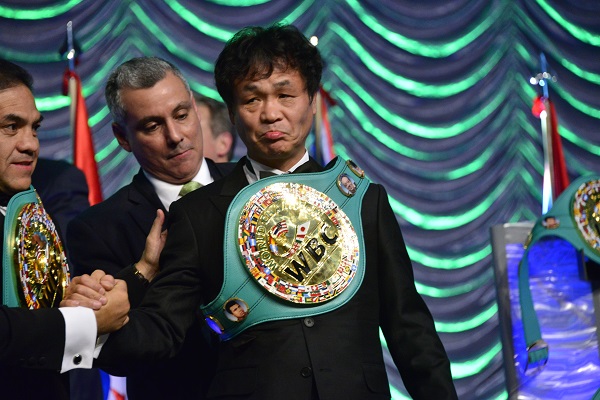
Years Active: 1980-1991
Professional record: 38-4, 17 KOs
Titles: WBC Light Flyweight champion 1983-1988.
Chang Jung-Koo is known by his nickname, “The Korean Hawk” because of his relentless style, handspeed and footwork reminded many of the great Aaron Pryor.
Among his most noteworthy wins before winning the title, he scored a third knockout of former WBA flyweight champion Alfonso Lopez in only his 15th pro fight. Then, Chang stopped future IBF flyweight champion Jong-Kwan Chung in the sixth round and defeated former WBC light flyweight champion Amado Ursua by a 10-round unanimous decision.
Chang failed in first attempt to win the world title, losing by split decision to Hilario Zapata of Panama in 1982. However, in the rematch held in Seoul, he knocked out Zapata in the 3rd round and became the WBC light flyweight world champion.
The Korean Hawk would go on the ellipse Yoko Guishiken’s record for most successful title defenses in the light flyweight division with 16 consecutive title wins between 1983 and 1988, before retiring as the champion.
Chang made an ill-fated comeback in 1989 due to financial troubles. In an attempt to regain his old title, he challenged and lost to the new WBC light flyweight champion, Humberto González.
He moved up one weight division and made two attempts to wrestle the WBC flyweight title, losing to both Sot Chitalada (who Chang had defeated before in a successful title defense) and the hard punching IBF flyweight champion Muangchai Kittikasem. Chang retired for good after Kittikasem defeated him by 12th-round knockout in 1991.
He became the first Korean boxer to be inducted in the International Boxing Hall of Fame in June 2010.
Photo via WBC
6. Masahiko Harada
Years Active: 1960-1970
Professional Record: 55-7, 22 KOs
Titles: WBA World Flyweight champion 1962-1963, World Bantamweight champion 1960-1967
Better known as Fighting Harada, Masahiko Harada is a former world boxing champion in the Flyweight and Bantamweight divisions, and also challenged for the Featherweight title twice. He is currently the president of the Japanese boxing association.
Harada was inarguably one of Japan’s most popular and most accomplished boxers. He, in fact, reached international fame and adulation. The Puerto Rican great Wilfredo Gómez, for example, used to idolized Harada as a child.
Harada won his first 24 bouts. Among the notable fighters he beat during this span was future world champion Hiroyuki Ebihara by a decision in six rounds.
On June 15, 1962, Harada finally suffered his first defeat, a decision loss by Edmundo Esparza over 10 rounds in Tokyo.
After securing another win, Harada received his first world-title try on October 10, 1962 and became the lineal and WBA world flyweight champion by scoring an 11th round knockout of Pone Kingpetch in Tokyo.
In their rematch, Harada lost the title in his first defense, being outpointed by Kingpetch over 15 rounds on January 12, 1963 in Bangkok, Thailand. It is perhaps worth noting that this was Harada’s first fight outside Japan.
On May 18, 1965, Harada defeated the legendary Eder Jofre in Nagoya, by a 15-round decision, to win his second world title–the unified WBA and WBC world bantamweight title. Jofre was undefeated in 50 fights going into that bout, and considered virtually unbeatable.
On June 1, 1966, Harada defeated Jofre once again, by a 15-round decision in Tokyo. The loss prompted Jofre to retire, and although he eventually made a comeback, Harada remains the only boxer to ever beat the great Jofre.
On February 27, 1968, Lionel Rose of Australia outpointed Harada over 15 rounds in Tokyo.
On July 28, 1969, Harada unsuccessfully challenged Australia’s Johnny Famechon for the WBC world featherweight belt, losing a controversial decision after the fight was first ruled a draw.
On January 6, 1970, Harada and Famechon met once again, this time in Tokyo. Harada dropped the champion in Round 10, but Famechon recovered, knocking Harada out of the ring in Round 14. The champion retained the title by knocking out Harada in that round. This was Harada’s last fight as a professional.
In 1996, Fighting Harada was elected into the International Boxing Hall of Fame. He became president of the Japanese Boxing Commission in 2002.
Some of Harada’s noteworthy achievements include handing Jofre the only two losses of his career, becoming the lineal champion in two weight classes (and fighting for the title in a third) at a time when there were only eight weight classes.
Harada was voted the 32nd best fighter of modern time by Ring Magazine in 2002.
Having fought almost exclusively in Japan as well as having suffered a few bad losses during the prime of his career keeps Harada from ascending further on this list.
5. Francisco Guilledo
(Pancho Villa)
Years Active: 1919-1925
Professional record: 77-4-4, 22 KOs
Titles: World Flyweight champion 1923-1925
Known to the boxing world as Pancho Villa, Francisco Guilledo stood only 5’1″ tall and never weighed more than 114 pounds. He rose from obscurity to become the first Asian to win the World Flyweight championship in 1923.
He was never knocked out in his entire boxing career, which ended tragically with his sudden death at the young age of 23 after complications following a tooth extraction.
Villa won various titles in the Philippines. Within a few months of his arrival in the United States, he scored an 11th round knockout of the American flyweight champion, Johnny Buff (John Lesky), in a non-title fight on September 15, 1922.
Villa won the Flyweight championship by knocking out the legendary Jimmy “Mighty Atom” Wilde of Wales in the seventh round on June 18, 1923.
He made several title defenses before his last fight, a non-title bout on July 4, 1925, when he lost a 10-round decision to Irish-born Canadian Jimmy McLarnin. 10 days later, Villa died from blood poisoning caused by an infected gum from where one of his wisdom teeth had been removed just prior to the fight.Villa lapsed into a coma and died the following day, July 14, 1925, 17 days before he would turn 24 years old.
Villa was inducted belatedly into the International Boxing Hall of Fame in 1994. 33 years earlier, in October 1961, Villa was added by Ring Magazine to its own boxing hall of fame. He was ranked the 59th best fighter by the Ring Magazine’s writers in 2002 on their list of the 80 Best Fighters of the Last 80 Years. He was voted as the No. 1 flyweight (along with Miguel Canto) of the 20th century by the Associated Press in 1999.
Villa had a short, but spectacular career. It would have been interesting if Villa could have enjoyed the sustained success of his meteoric rise had it not been for his untimely death.
4. Gennady Golovkin
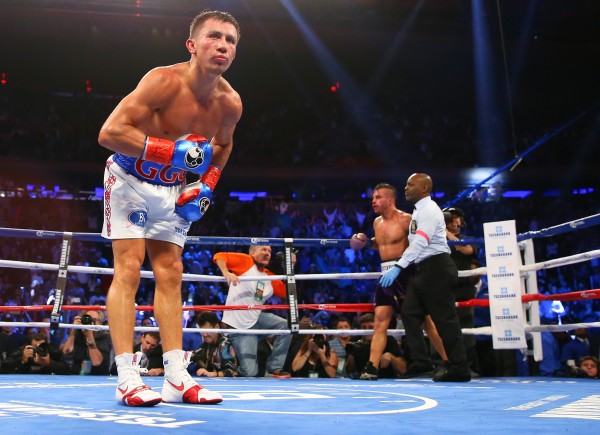
Years Active: 2006-Current
Professional Record: 34-0, 31 KOs
Titles: WBA (Super), IBF, IBO, and WBC (interim) middleweight champion
Gennady Golovkin is a Kazakhstani professional boxer–his mother is from South Korea. Golovkin is presently the consensus world’s No. 1 middleweight and one of the best boxers regardless of weight or titles.
The Ring magazine currently ranks him as the third best boxer in the world, pound for pound, and named him the Fighter of the Year in 2013.
Known as GGG (“Triple G”), Golovkin is an aggressive, counterpunching pressure fighter. Although he is not fluid and tends to absorb a lot of punches as he looks to unload his own arsenal, Golovkin is highly skilled in taking away his opponent’s jab and cutting off the ring.
He has the distinction of owning the highest knockout percentage (91.2 percent ) in middleweight championship history and many believe he has one of the hardest chins in modern boxing. He has never been knocked down or knocked out in over 375 fights, neither as a professional nor amateur.
GGG has also defended the middleweight title successfully 15 times, more than anyone is the division’s history other than Bernard Hopkins, who made 20 successful title defenses.
Golovkin also had a stellar amateur career, winning a gold medal in the middleweight division at the 2003 World Championships. He later earned the silver medal, as a representative of Kazakhstan, at the 2004 Olympics.
The country of Kazakhstan (which was part of the former Soviet Union) has a disputed border in Europe as well as Central Asia. Most boxing fans are not aware that the Kazakhstan-born Golovkin is also half Korean, as noted earlier.
A somewhat controversial selection on here because many believe he is European. Moreover, his career is currently active and far from over.
He is both deserving and qualified to be on this list. Only Manny Pacquiao has garnered greater international status and recognition. He may still be in the prime of his career and bigger fights may await him (most notably against fellow middleweight champion Saul “Canelo” Alaverez), but there is no denying what Golovkin has already accomplished in the ring.
His stock and status will only rise as he looks to stay unbeaten and continues to defend his unified titles.
Photo by Ed Mulholland
3. Yuh Myung-Woo
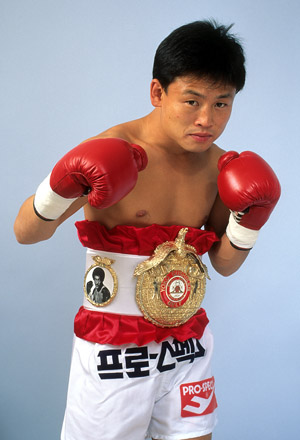
Years Active: 1982-1993
Professional Record: 38-1, 14 KOs
Titles: WBA Light Flyweight champion 1985-1991; 1992-1993
Fans nicknamed Yuh Myung Woo “Sonagi”–which translates to rainfall–because he pelted his opponents with a whirlwind style combination of punches until they were overwhelmed. Yuh, along with Chang Jung-Koo, are widely considered as the two best boxers South Korea has ever produced.
Yuh made a division record of 18 total title defenses over two reigns of the WBA Light Flyweight crown, including 17 successful title defenses during his first reign. Yuh’s record surpassed the previous record of 15 successful title defenses in a continuous reign set by former WBC light flyweight champion and the aforementioned fellow countryman, Chang.
On December 8, 1985, Yuh won the WBA light flyweight title by scoring a split decision over champion Joey Olivo. On April 29, 1990, Yuh faced the toughest fighter of his career in his 15th title defense. Yuh defeated former WBA minimumweight champion Leo Gamez by split decision over 12 rounds.
Gamez was undefeated at that point, with a record of 20-0. Yuh and Gamez faced each other in a rematch, held on November 11, 1990, due to the closeness of their first fight.
This time, Yuh scored a unanimous decision win. It is worth noting that Gamez would go on to become one of 9 men in boxing history to have held world titles in four different weight classes. Gamez would later capture the WBA light flyweight, WBA flyweight and WBA super flyweight titles.
Yuh’s record 17th title defense came against Kajkong Danphuthai on April 28, 1991, scoring a 10th round knockout over his opponent. On December 12, 1991, Yuh lost his title former WBC strawweight champion Hiroki Ioka.
The Japanese challenger Ioka scored a 12 round split decision, handing Yuh his first loss as a professional boxer. It would also turn out to be the only defeat of his amazing career.
On November 18, 1992, Yuh returned to Japan to the same arena where he had lost his title, to reclaim it with a 12 round majority decision over Hiroki Ioka.
Yuh would made one more appearance in the ring before retiring as the most storied 108-pound fighter ever at the tender young age of 29 years old. On July 25, 1993, Yuh defeated Yuichi Hosono over a 12 round unanimous decision to retain his title, the only title defense of his second reign.
The man known by the moniker, Sonagi, amassed a record of 20-1 (10 KOs) in world title fights and finished with a impressive record of 8-1 against former, current and future world titlist. They included Chung Bi-Won, Joey Olivo, Jose DeJesus (twice), Rodolfo Blanco, Leo Gamez (twice) and Hiro Ioka.
It was reported that just prior to their historic first title unification of the IBF and WBC light flyweight titles on March 13, 1993, Michael Carbajal and Humberto Gonzalez both agreed that their WBA counterpart Yuh posed a greater threat to them than they did to each other (won by Carbajal via 7th round knockout).
Yuh was ranked the ninth best pound-for-pound boxer in the world by The Ring in 1990. He was inducted into the International Boxing Hall of Fame in June 2013.
Photo by The Ring Magazine/Getty Images
2. Sohla Saenghom
(Khaosai Galaxy)
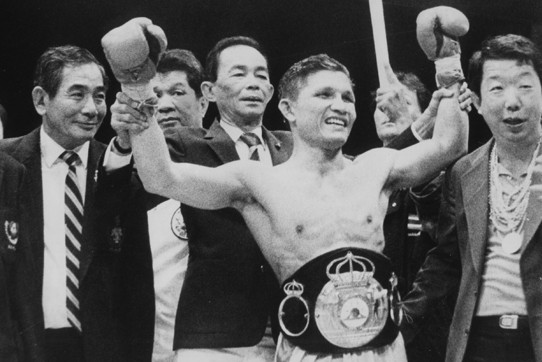
Years Active: 1980-1991
Professional record: 47-1, 41 KOs
Titles: WBA Super Flyweight champion 1984-1991
Born as Sohla Saenghom, he took the name Khaosai which came from a nightclub owned by his boxing manager. He was nicknamed the “Thai Tyson” because his fierce, explosive power reminded fans of a miniature version of Mike Tyson.
The Thai Tyson relied on toughness and his fearsome punching power to earn victories when he first began his boxing career. Galaxy was excellent at closing the distance on his opponent and firing his left hand–arguably the hardest single punch in the history of the lower weight classes and responsible for all his knockout wins.
Khaosai began to develop into a more refined boxer as he gained more experience, learning to throw deadly combinations to set-up his powerful left to the head and midsection of his opponents. He was thickly muscled and unbelievably strong. He used his strength to out-muscle opponents while using his surprisingly fleet feet to cut-off their movements.
Galaxy won all of his first six fights, quickly earning him a shot at the Thailand bantamweight title on July 29, 1981 against Sakda Saksuree.
He lost by decision. It was to be the only fight he would ever lose in the ring.
Khaosai rebounded to win his next three fights and claimed the Thai bantamweight title in 1982. After winning 15 consecutive fights by knockout, he became the No. 1 mandatory challenger to super flyweight WBA world champion, Jiro Watanabe’s title by the summer of 1984.
The WBA stripped Watanabe for failing to defend his title against Galaxy. The vacant championship pitted Khaosai against undefeated Eusebio Espinal on November 21, 1984. Galaxy knocked out Espinal in the sixth round to begin the longest title reign in bantamweight history.
Khaosai defended his WBA title 19 times over the next seven years, winning 16 of his title fights by knockout.
Galaxy defeated unbeaten and future WBA bantamweight titleholder Israel Contreras in Curacao. It was the only time he fought outside of Asia. He had two title fights in Japan, one in Korea and one in Indonesia. All of his other fights were in Thailand, where he often fought for purses in excess of $100,000 in front of massive crowds.
Moreover, few top American and European fighters in the lower weight divisions were willing to challenge Galaxy, which made him a virtual unknown in the West.
Galaxy fought for the last time on December 21, 1991 in Bangkok, scoring a 12-round decision over Armando Castro. He retired with an impressive record of 49 wins (including 43 wins in a row) against only one defeat and 41 of those wins by knockout.
Arguably the top super flyweight of all time, Galaxy holds noteworthy wins over Rafael Orono, Israel Contreras and Ellyas Pical. Voted into the International Boxing Hall of Fame in June 1999, the Ring Magazine voted him the 19th biggest puncher of all-time, and the 43rd best fighter of modern time by in 2002.
Some boxing writers and historians will point out that Galaxy never fought Gilberto Roman, the long-time WBC bantamweight champion whose own lengthy title reign largely coincided with Khaosai’s.
He also only had four fights with other prior, current or future titlists in his career and seven of his title defenses came against fighters with less than 15 fights of experience and it was already noted that Galaxy fought just one time outside of Asia.
Most fans, however, recognize Galaxy as Thailand’s greatest boxer ever and widely considered one of the greatest, most dominant champions in boxing history.
1. Manny Pacquiao
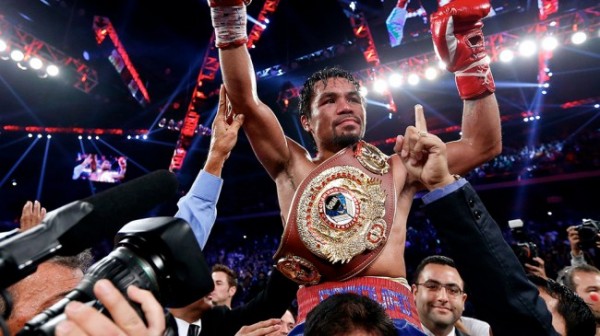
Years Active: is a Filipino professional boxer (1995-Current)
Professional Record: 58-6-2
Titles: WBC Flyweight (112), Lineal Flyweight (112), IBF Super Bantamweight (122), The Ring Featherweight (126), WBC Super Featherweight (130), The Ring Junior Lightweight (130), WBC Lightweight (135), The Ring Junior welterweight (140), IBO Junior welterweight (140), WBO Welterweight (147), WBC Super Welterweight (154), First to win five lineal championships
Known as the Pacman, Manny Pacquiao is an aggressive southpaw with tremendous hand speed, explosive power in either hand and impeccable footwork. He is a pressure fighter that attacks from different angles and adapts very well to his opponents’ fighting styles. It is this combination of gifts and strengths that has allowed Pacquiao to win more titles and at more weight divisions than any fighter in history.
Pacquiao is the first and only eight-division world champion, winning 10 total world titles, as well as the first to win the lineal championship in five different weight classes.
Pacquiao was named “Fighter of the Decade” for the 2000s (decade) by the Boxing Writers Association of America (BWAA), World Boxing Council (WBC) and World Boxing Organization (WBO). He is also a three-time recipient of the Ring magazine and BWAA “Fighter of the Year,” winning the award in 2006, 2008, and 2009, and the Best Fighter ESPY Award in 2009 and 2011.
Still considered one of the world’s best pound-for-pound boxers after a long, distinguished career, The Ring Magazine currently ranks Pacquiao No. 7 on top 10 pound-for-pound list and has been on this prestigious list longer than any other active fighter.
Pacquiao captured his first world title on December 4, 1998 by scoring a eighth-round knockout over Chatchai Sasakul, winning the lineal and WBC flyweight championship.
Pacquiao’s big break came on June 23, 2001, when he stepped into the fight as a late replacement against IBF Super Bantamweight title holder Lehlohonolo Ledwaba. Manny scored a sixth-round TKO to win the title, his second major boxing world title
On November 15, 2003, Pacquiao defeated Marco Antonio Barrera by 11th round TKO in a fight that many consider the defining moment of his career. Manny won the lineal and The Ring Magazine featherweight championship, making him the first Filipino and Asian to become a three-division world champion in doing so. He defended the title twice before relinquishing it in 2005.
On March 15, 2008, fought Mexican boxing legend Juan Manuel Márquez in a rematch of their first fight from four years earlier, which ended in a disputed draw.
Pacquiao won via split decision, winning the WBC super featherweight and The Ring Magazine super featherweight titles, making him the first Filipino and Asian to become a four-division world champion.
On June 28, 2008, Pacquiao defeated David Díaz in lightweight division via ninth-round knockout and won the WBC lightweight title. With the victory, Pacquiao had now become the first and only Filipino and Asian to be a five-division world champion.
On May 2, 2009, Pacquiao scored a devastating second-round knockout against Ricky Hatton, perhaps the most spectacular of his career, to win The Ring Magazine and IBO light welterweight titles. In doing so, Pacquiao became only the second man in boxing history to become a six-division world champion.
On November 14, 2009, Pacquiao defeated Miguel Cotto via 12th round stoppage to win the WBO welterweight title, was awarded the WBO super welterweight championship title and became the first seven-division world champion in history.
On November 13, 2010, Pacquaio outclassed former welterweight and light middleweight champion Antonio Margarito by unanimous decision to win the vacant WBC light middleweight title, earning a world title in his eighth-weight class.
In February 2015, it was announced that Pacquiao would fight undefeated American, Floyd Mayweather at the MGM Grand Garden Arena in Las Vegas on May 2, 2015.
Billed the “Fight of the Century,” the long-anticipated bout between the era’s two signature boxers brought in a record purse via gate receipts and pay-per-view buys. Despite fighting with an injured right shoulder, Pacquiao gamely went after Mayweather, but was unable to land many effective punches. He lost a unanimous decision to drop his record to 57-6-2.
Pacquiao confirmed that the April 9 rubber match with Timothy Bradley would be his last fight.
Pacquiao was long rated as the best pound-for-pound boxer in the world by most sporting news and boxing websites, including ESPN, Sports Illustrated and The Ring Magazine from his climb to lightweight until his succession of losses in 2012.
He has a record of 18-4-2, 8 KOs in world title fights and 20-5-2, 10 KOs against former or current world titlists, including some boxing legends: Erik Morales (twice), Juan Manuel Marquez (twice), Oscar De La Hoya, Miguel Cotto, Shane Mosley and Marco Antonio Barrera (twice).
There are great fighters and then there is Manny Pacquiao. The only man to win a world title in eight-different weight divisions.
The greatest Asian boxer of all-time? There is no question who should top this list. Pacquiao has no peers. Pacquiao is inarguably the greatest, most talented and accomplished fighter to come from the continent of Asia.
It is very doubtful we will see the likes of him again for years to come.
Photo by Vincent Yu
